# 10. Neo4j 图数据库
# 1. 安装配置
# 1.1. neo4j 社区版
- 安装配置 JDK 环境,比如需要 jdk11 以上版本
- 从 neo4j 官网🔗 (opens new window) 的 下载地址🔗 (opens new window) 下载安装包
- 离线安装包解压即可
- 启动数据库
在
../neo4j-community-4.0.3/bin安装目录下打开命令行neo4j console1正常数据库打开效果
D:\neo4j-community-4.0.3\bin>neo4j console 2020-07-02 06:57:01.863+0000 INFO ======== Neo4j 4.0.3 ======== 2020-07-02 06:57:01.868+0000 INFO Starting... 2020-07-02 06:57:10.438+0000 INFO Bolt enabled on localhost:7687. 2020-07-02 06:57:10.439+0000 INFO Started. 2020-07-02 06:57:11.376+0000 INFO Remote interface available at http://localhost:7474/1
2
3
4
5
6在浏览器中打开
http://localhost:7474/即可访问数据库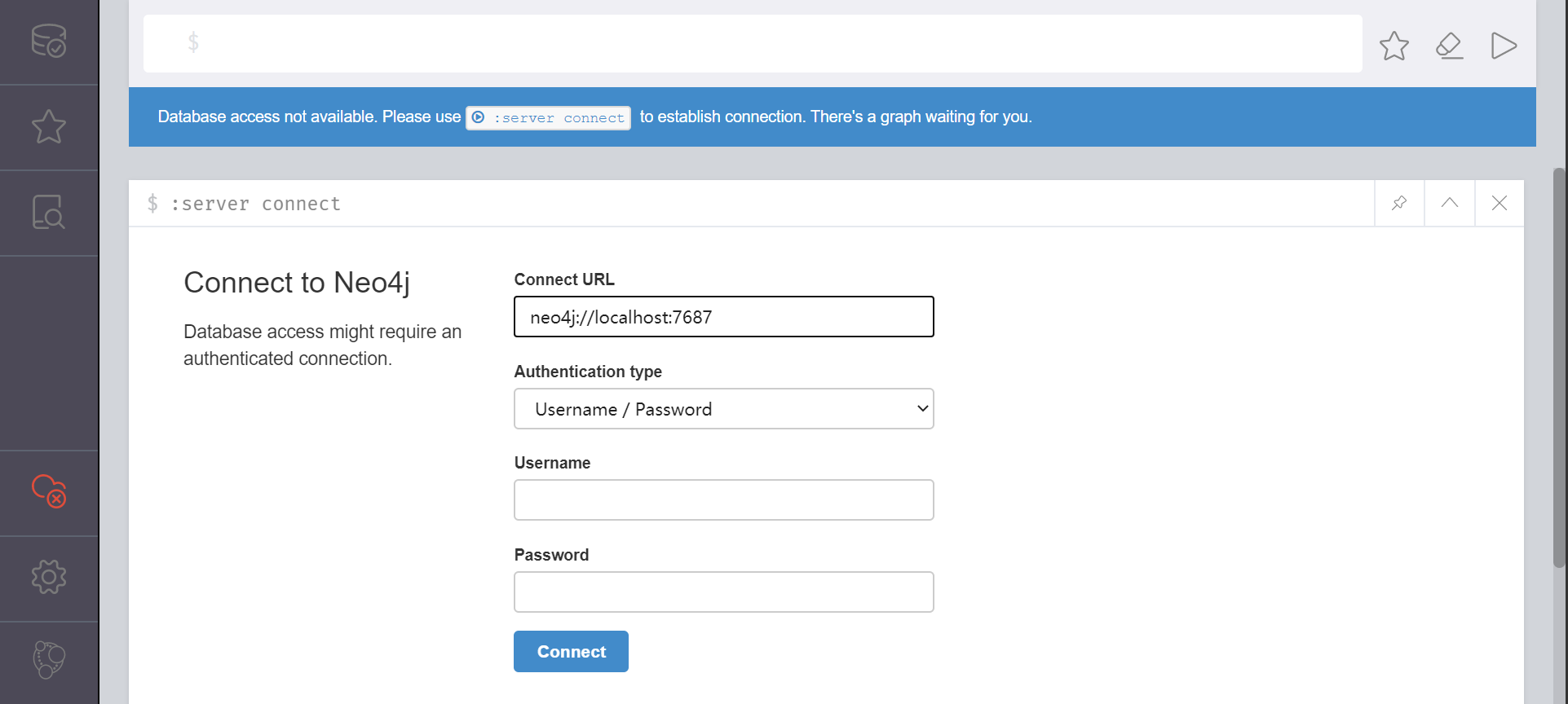
默认用户名
neo4j,密码neo4j,首次登录会要求修改密码
# 1.2. neo4j desktop 版
下载安装 Destop 版本,需要注册,并复制激活码。下载地址 (opens new window)
安装完成后输入激活码,进入界面
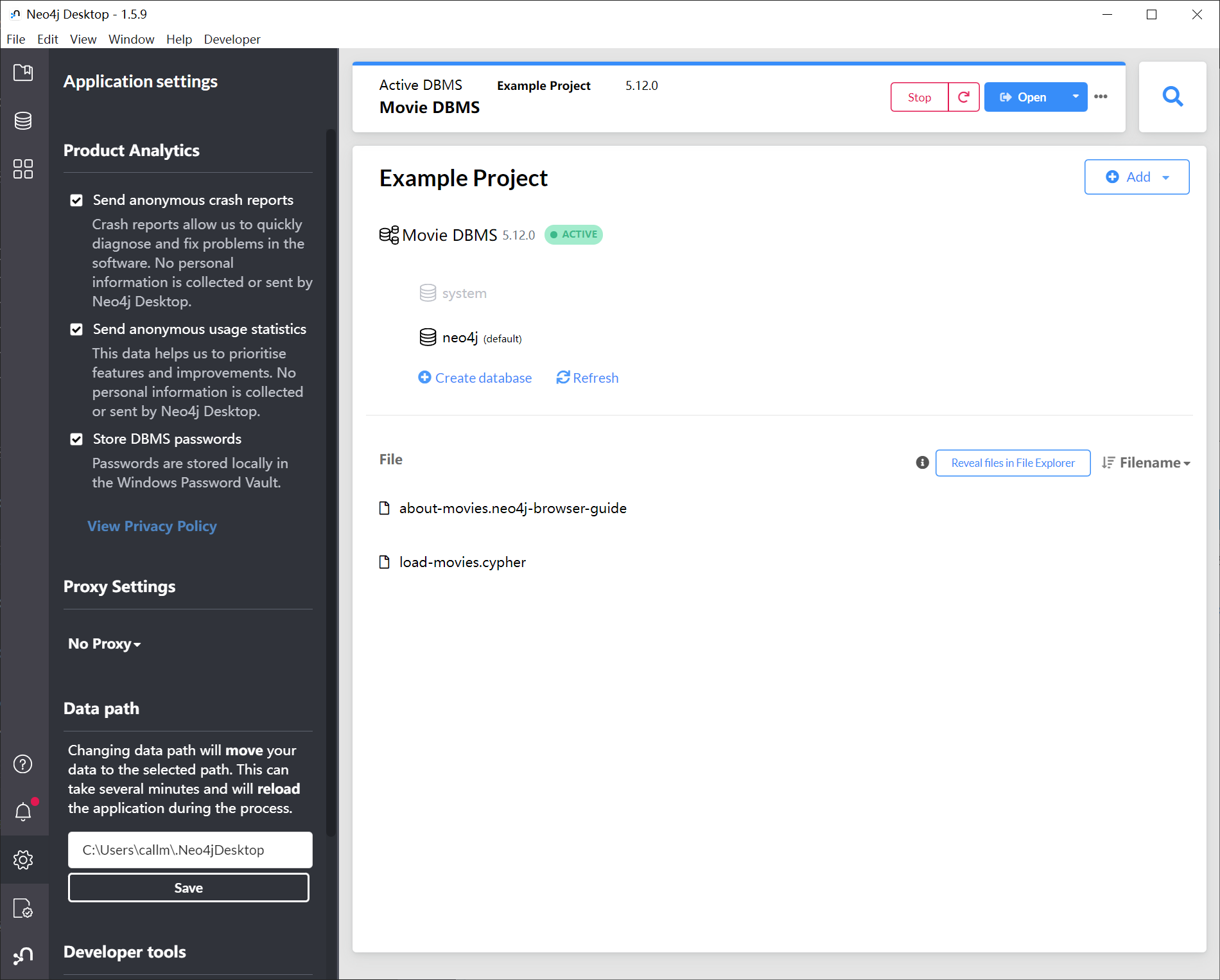
创建数据库
新建项目:点击 New->Create Project
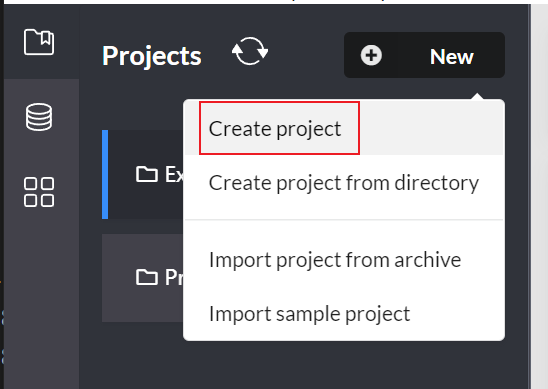
新建数据库:Add->Local DBMS

输入数据库名,点击 Create 创建数据库
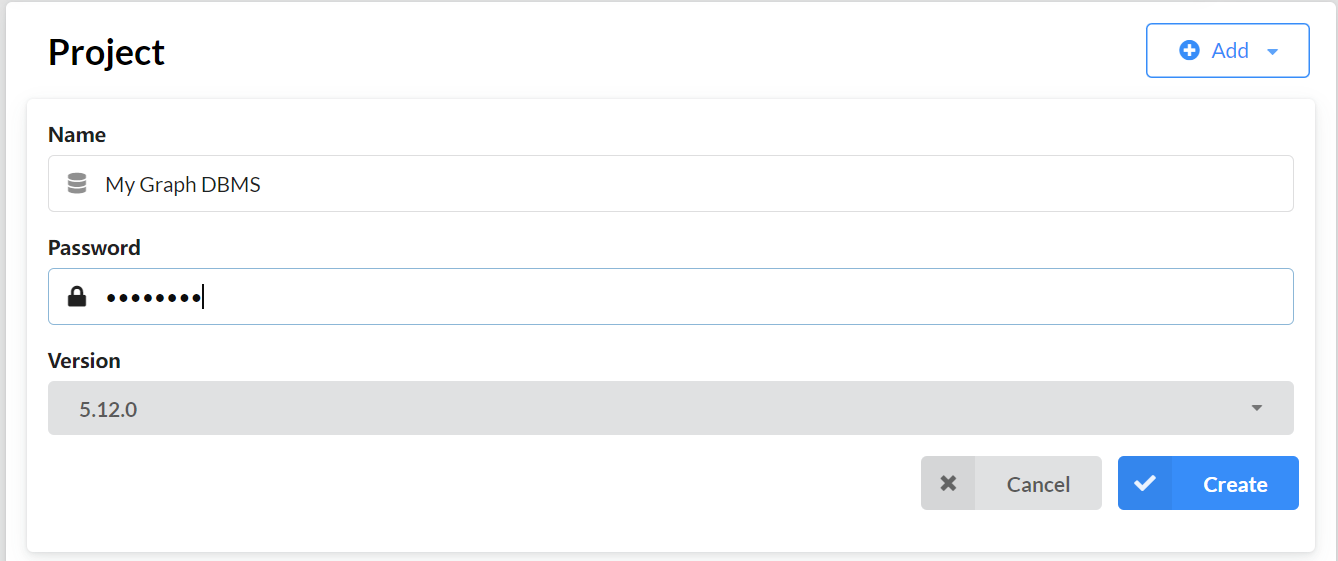
点击 Start 启动数据库

数据库访问地址和端口号
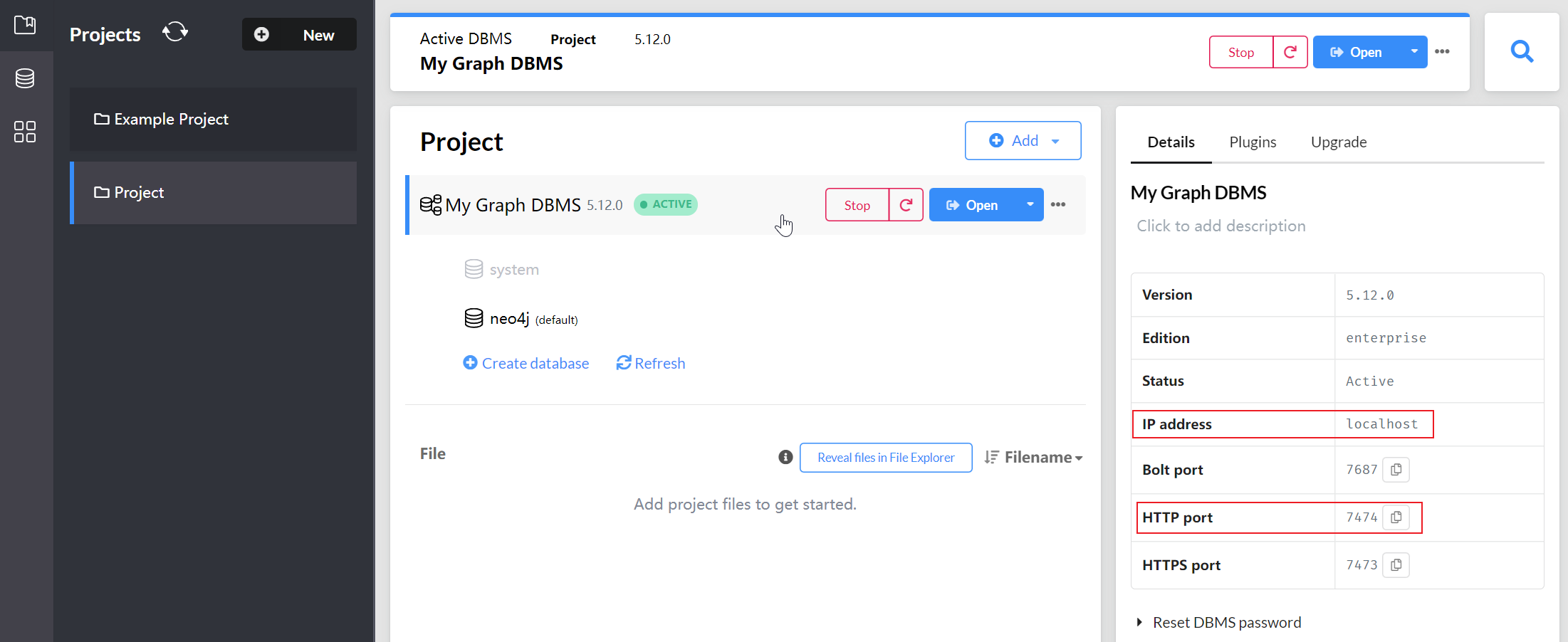
# 2. py2neo 使用
# 2.1. 安装
安装
py2neo库pip install py2neo1连接数据库
from py2neo import Graph, Node, Relationship # 连接数据库 连接地址,数据库名,密码 neo_graph = Graph('http://localhost:7474', name='neo4j', password='password') # 简写 1 neo = Graph('localhost', auth=('neo4j', 'password')) # 简写 2 neo = Graph('localhost', password='password')1
2
3
4
5
6
7
8
9
10demo
from py2neo import Graph, Node, Relationship # 连接数据库 neo_graph = Graph( 'http://localhost:7474', username='neo4j', password='password' ) db = neo_graph.begin() # 建立节点 a = Node('person', name='Alice') b = Node('person', name='Bos') # 创建关系 ab = Relationship(a, 'knows', b) # 写入数据库 db.create(ab) db.commit() # 旧版函数 neo_graph.commit(db) # 新版函数 print(ab)1
2
3
4
5
6
7
8
9
10
11
12
13
14
15
16
17
18
19
20
21
22(Alice)-[:knows {}]->(Bos)
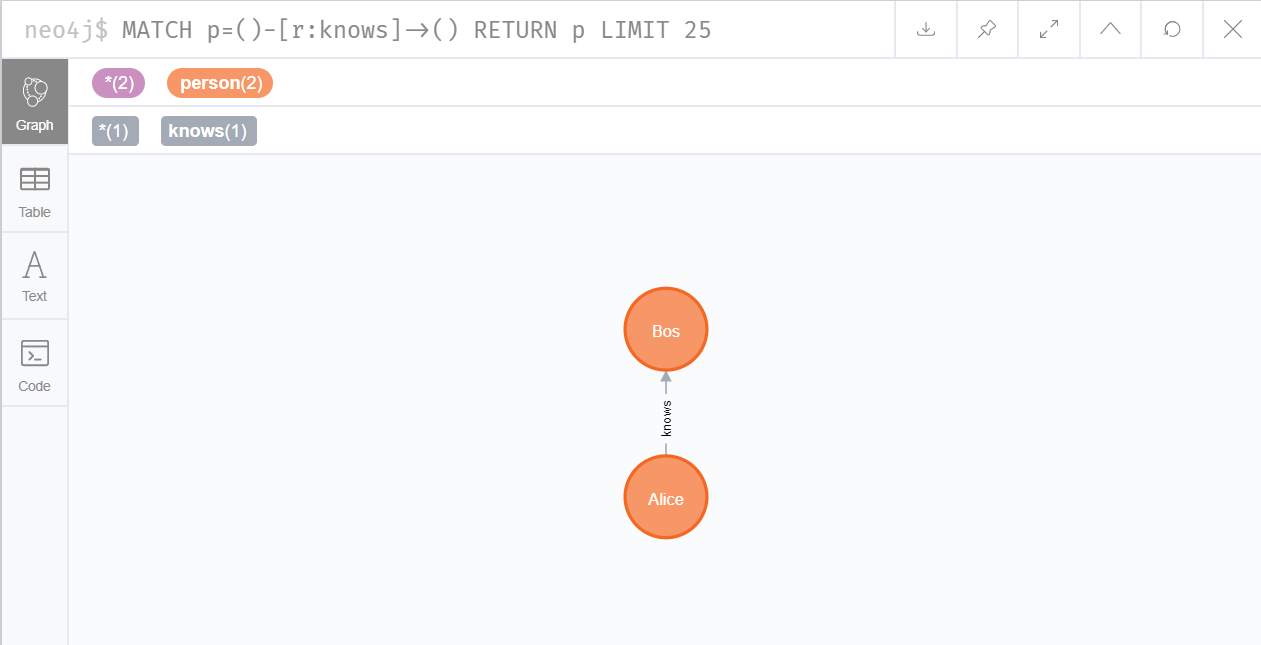
cypher 写法
neo_graph.run('create(p:person{name:"Alice", age:16})') neo_graph.begin().commit()1
2
# 2.2. 增
创建节点与属性
py2neo 写法
# 创建节点 a = Node('person', name='Alice') neo_graph.create(a) b = Node('person', name='Bob') neo_graph.create(b) # 创建关系 ab = Relationship(a, 'knows', b) neo_graph.create(ab) # 添加属性 a['age'] = 20 b['age'] = 21 ab['time'] = '2020-07-03' print(a) print(b) print(ab)1
2
3
4
5
6
7
8
9
10
11
12
13
14
15
16(:person {age: 20, name: 'Alice'}) (:person {age: 21, name: 'Bos'}) (Alice)-[:knows {time: '2020-07-03'}]->(Bos)
批量创建节点
from py2neo import Graph, Node, Relationship, NodeMatcher, Subgraph node_list = [] for n in nodes: node_list.append(n) sub_graph = Subgraph(node_list, []) # 如果要同步创建关系,后面的 [] 可以换成关系的 list neo_graph.create(sub_graph)1
2
3
4
5
6
7
8
设置默认属性 setdefault
a.setdefault('location', 'beijing') print(a)1
2(:person {age: 20, location: 'beijing', name: 'Alice'})
属性批量更新 update
data = { 'name': 'amy', 'age': 21 } a.update(data) print(a)1
2
3
4
5
6
7
8(:person {age: 21, location: 'beijing', name: 'amy'})
# 2.3. 删
删除节点
# 删除节点 2 neo_graph.delete(neo_graph.nodes[2]) neo_graph.begin().commit()1
2
3删库
neo_graph.delete_all()1
# 2.4. 改
修改节点属性
# 修改节点名称 node = neo_graph.nodes[1] node['name'] = "Tom" neo_graph.push(node)1
2
3
4
# 2.5. 查
查询节点
通过 nodes 的 id 查询
from py2neo import Graph neo = Graph( 'http://localhost:7474', username='neo4j', password='password' ) print(neo_graph.nodes[1]) print(neo_graph.nodes.get(1))1
2
3
4
5
6
7
8
9
10(_1:person {age: 21, name: 'Bob'})
通过 Cypher 语言查询
n = neo_graph.run("MATCH (a:person) RETURN a.name,a.age LIMIT 4").data() for i in n: print(i)1
2
3{'a.name': 'amy', 'a.age': 21} {'a.name': 'Bob', 'a.age': 21}
通过 NodeMatcher 查询
matcher = NodeMatcher(neo_graph) find = matcher.match('person').where('_.name="Bob"').first() # 查找第一个匹配项 # 或 find = matcher.match('person').where(name="Bob").first() print(find) # (_1:person {age: 21, name: 'Bob'}) # 批量查找某个类型节点 nodes = matcher.match('person') for p in nodes: print(p['name']) # 查询全部节点 node = neo_graph.nodes.match().all() print(len(node)) # 多条件搜索 nodes = matcher.match('person', age=20) # 只能用等号的 # 或 nodes = matcher.match('person').where(age=20) # 如果是非确定的条件搜索,用`_. 参数` nodes = matcher.match('person').where('_.age > 20')1
2
3
4
5
6
7
8
9
10
11
12
13
14
15
16
17
18
19
20
21
查询关系
直接查询
# 查询全部关系 rs = neo_graph.relationships.match().all() print(len(rs)) # 查询特定关系 rs = neo_graph.relationships.match(None, r_type='knows') print(len(rs))1
2
3
4
5
6
7使用 RelationshipMatcher 查询
# 查询某一类关系 rm = RelationshipMatcher(neo_graph) rs = rm.match(None, r_type='knows').first() # 查询某个节点的关系 node = neo_graph.nodes.match('people').first() print(node['name']) rm = RelationshipMatcher(neo_graph) rs = rm.match([node], r_type='knows').first()1
2
3
4
5
6
7
8
9
查询路径
查询类型
# 查询所有节点类型 print(neo_graph.schema.node_labels) # 查询所有关系 print(neo_graph.schema.relationship_types)1
2
3
4
5
# 2.6. 参考资料
# 3. Neomodel 使用
# 3.1. 安装
安装 neomodel
pip install neomodel1连接数据库
from neomodel import config # 默认用户名密码 config.DATABASE_URL = 'bolt://neo4j:neo4j@localhost:7687'1
2
3或
from neomodel import db db.set_connection('bolt://neo4j:neo4j@localhost:7687')1
2
# 3.2. 创建模型
定义关系和模型,命名为 models.py
from neomodel import (config, StructuredNode, StringProperty, IntegerProperty, UniqueIdProperty, RelationshipTo) # 节点 1 country class Country(StructuredNode): code = StringProperty(unique_index=True, required=True) # 节点 2 person class Person(StructuredNode): uid = UniqueIdProperty() name = StringProperty(unique_index=True) age = IntegerProperty(index=True, default=0) # traverse outgoing IS_FROM relations, inflate to Country objects country = RelationshipTo(Country, 'IS_FROM')1
2
3
4
5
6
7
8
9
10
11
12
13
14
15关系类型
关系 方向 备注 Relationship 双向 双向查询 RelationshipTo 正向 可以从当前节点查到对象节点 RelationshipFrom 反向 可以从对象节点查询当前节点
# 3.3. 使用模型
创建模型
from neomodel import config import models config.DATABASE_URL = 'bolt://neo4j:password@localhost:7687' jim = test.Person(name='jim', age=3).save()1
2
3
4
5
6查询节点
# 单一查询(如果有多个会报错) jim = models.Person.nodes.get_or_none(name='jim') # 查询第一个 ch = models.Country.nodes.first_or_none(name='China') # 多项查询,返回一个对象列表 ch = models.Country.nodes.filter(name='China') # 全部 all_nodes = Person.ndoes.all()1
2
3
4
5
6
7
8创建关系
# 获取节点 jim = models.Person.nodes.get_or_none(name='jim') # 创建节点 ch = models.Country(name='China').save() # 创建节点关系 jim.country.connect(ch)1
2
3
4
5
6更新节点
# 获取节点 jim = models.Person.nodes.get_or_none(name='jim') # 更新数据 jim.age = 4 # 保存更新 jim.save()1
2
3
4
5
6删除
am = models.Country.nodes.get_or_none(name='American') am.delete()1
2
# 4. Neo4j 使用
# 4.1. 安装配置
安装
pip install neo4j1连接数据库
from neo4j import GraphDatabase
driver = GraphDatabase.driver("bolt://localhost:7687", auth=("neo4j", "password"))
2
3
# 4.2. 增删改查
- 增
- 删
- 改
- 查
# 4.3. 参考资料
# 5. Cypher
# 5.1. 增
- 创建节点
# 5.2. 删
# 5.3. 改
# 5.4. 查
查询孤立节点
match (n) where not(n)-[]-() return n;1根据属性查询节点
MATCH (n:people {name:'Bob'}) RETURN n;1
